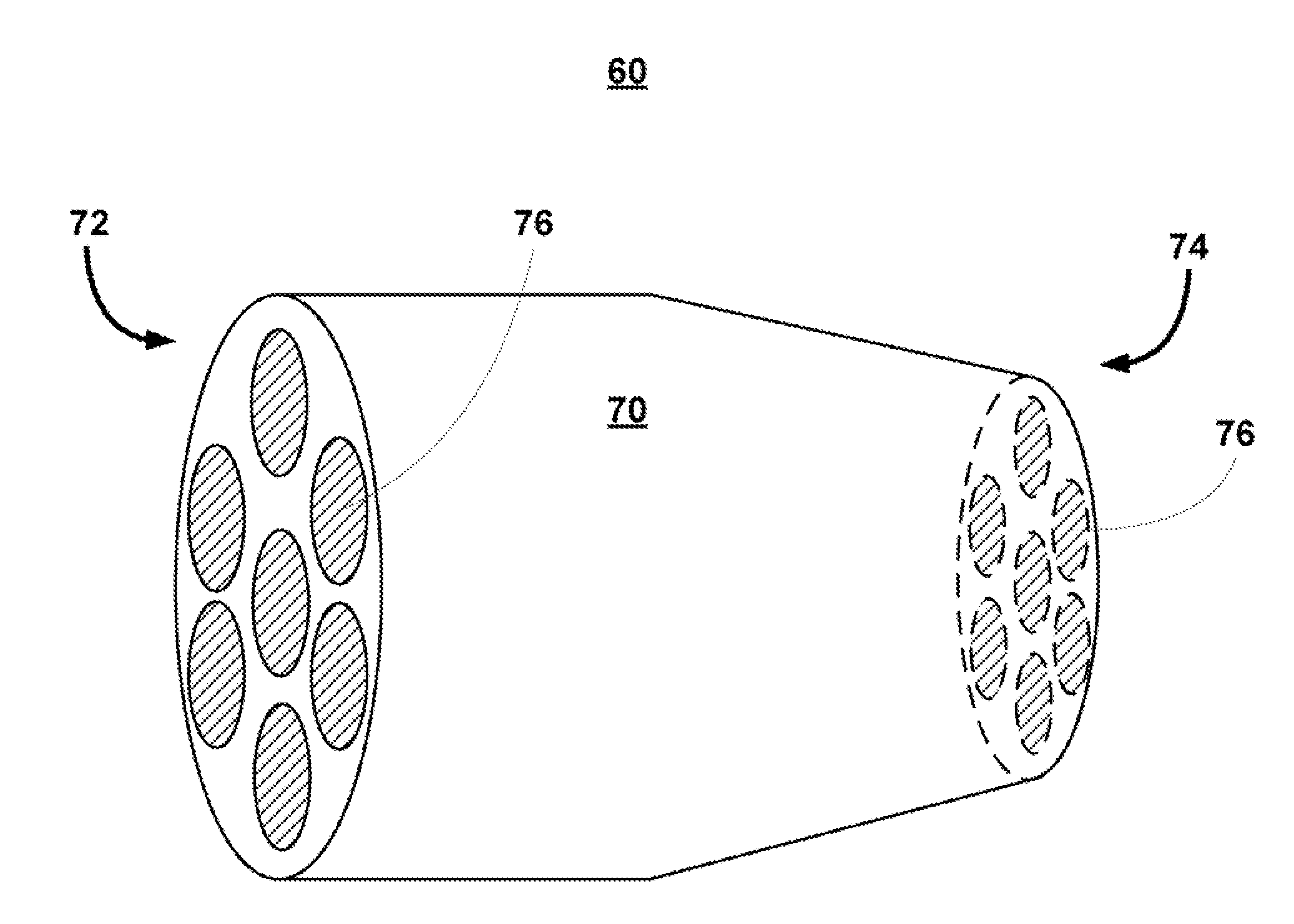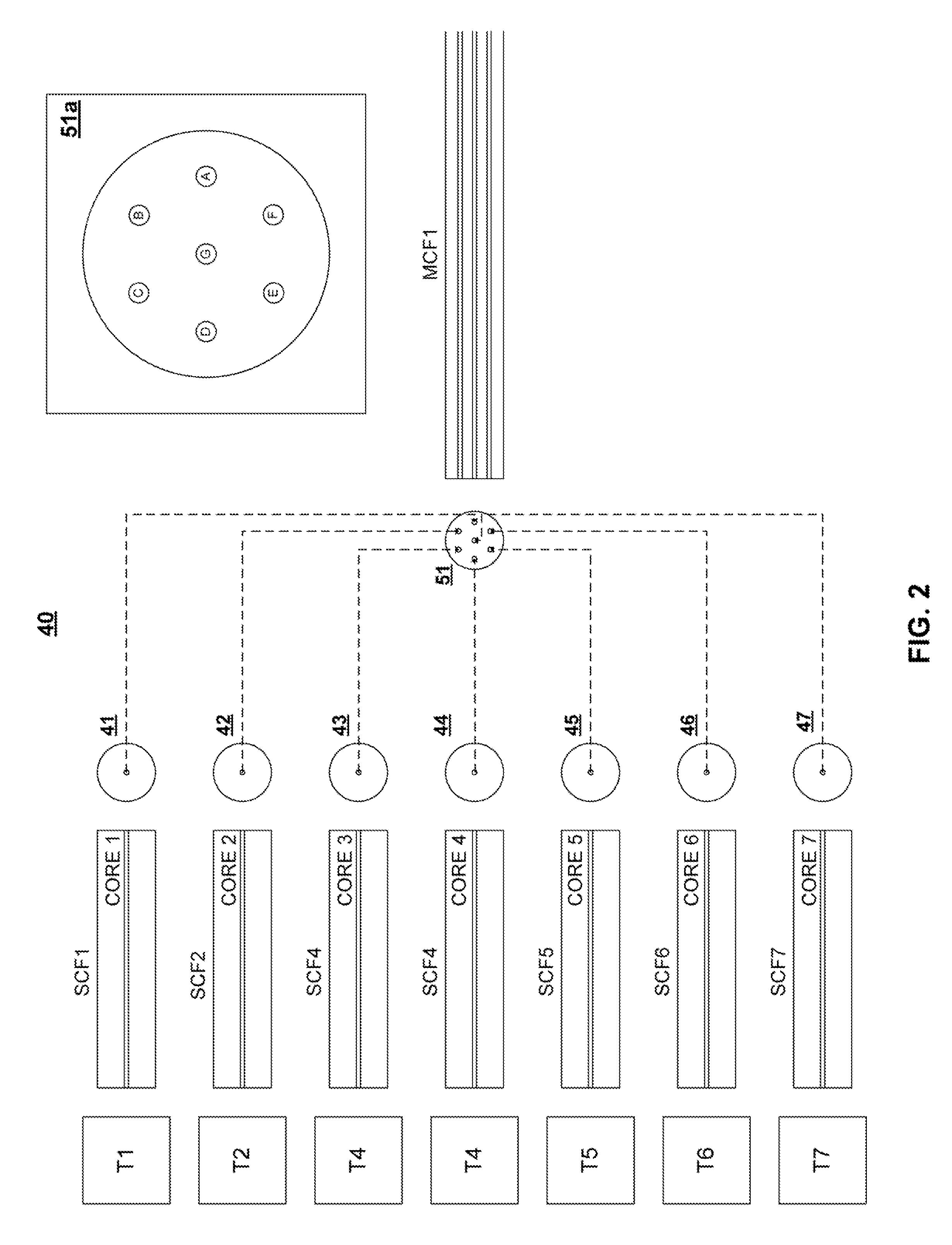Techniques and devices for low-loss, modefield matched coupling to a multicore fiber
a modefield matching and multi-core fiber technology, applied in the direction of cladded optical fiber, manufacturing tools, instruments, etc., can solve the problems of increased coupling losses, complex methods, and multiple components, and the described technique is not suitable for use with these mcfs
- Summary
- Abstract
- Description
- Claims
- Application Information
AI Technical Summary
Problems solved by technology
Method used
Image
Examples
Embodiment Construction
[0023]An aspect of the invention is directed to structures and techniques for coupling a plurality of single-core fibers (SCF) to a multicore fiber (MCF), wherein each SCF core is coupled to a respective individual MCF core.
[0024]Exemplary practices of the invention are described below in the context of providing coupling to the individual cores of a 7-core MCF design, of the type described in U.S. Provisional Patent Application Ser. No. 61 / 314,184, filed on Mar. 16, 2010, owned by the assignee of the present application and incorporated herein by reference in its entirety. However, it will be appreciated that the described techniques are applicable in other contexts, with other types of multicore fibers having different numbers of cores, different core and cladding structures, different core configurations, and the like.
[0025]FIGS. 1A and 1B show, respectively, cross section and isometric diagrams of an exemplary 7-core MCF 20 of the type described in Ser. No. 61 / 314,184, comprisin...
PUM
| Property | Measurement | Unit |
|---|---|---|
| outer diameter | aaaaa | aaaaa |
| outer diameter | aaaaa | aaaaa |
| diameter | aaaaa | aaaaa |
Abstract
Description
Claims
Application Information
 Login to View More
Login to View More - R&D
- Intellectual Property
- Life Sciences
- Materials
- Tech Scout
- Unparalleled Data Quality
- Higher Quality Content
- 60% Fewer Hallucinations
Browse by: Latest US Patents, China's latest patents, Technical Efficacy Thesaurus, Application Domain, Technology Topic, Popular Technical Reports.
© 2025 PatSnap. All rights reserved.Legal|Privacy policy|Modern Slavery Act Transparency Statement|Sitemap|About US| Contact US: help@patsnap.com



